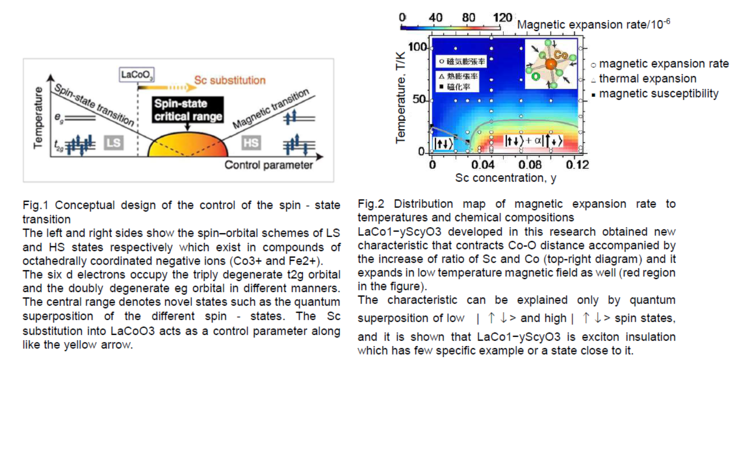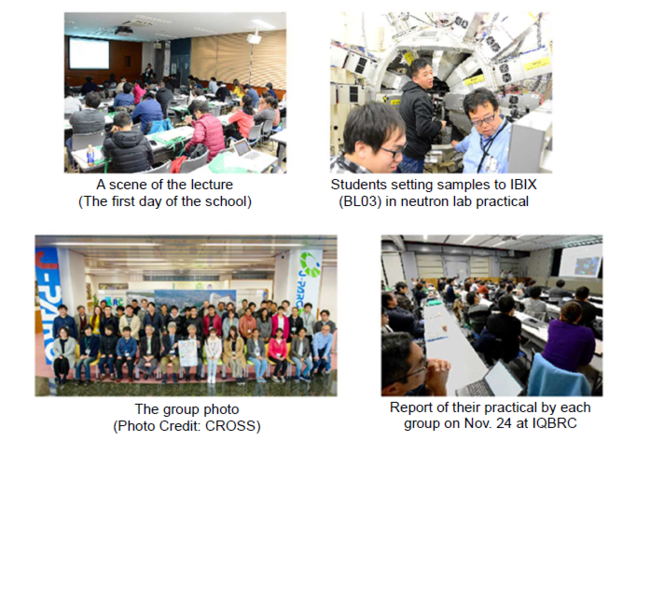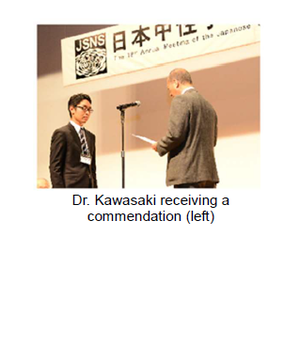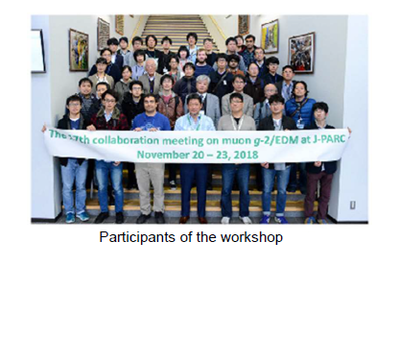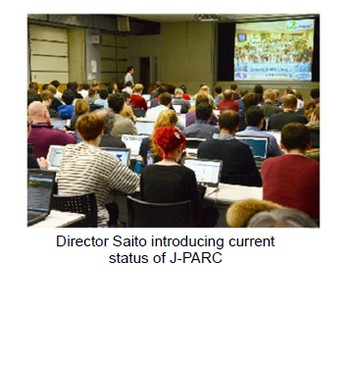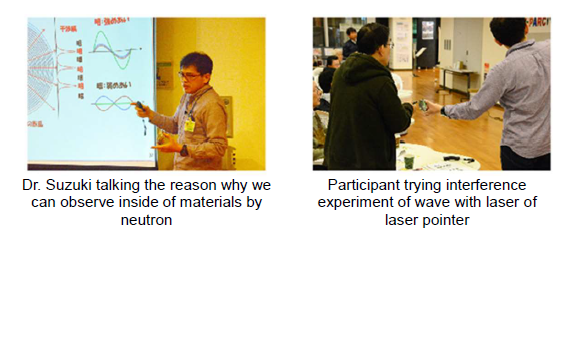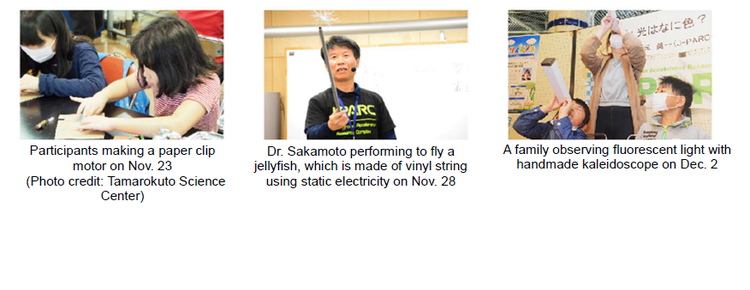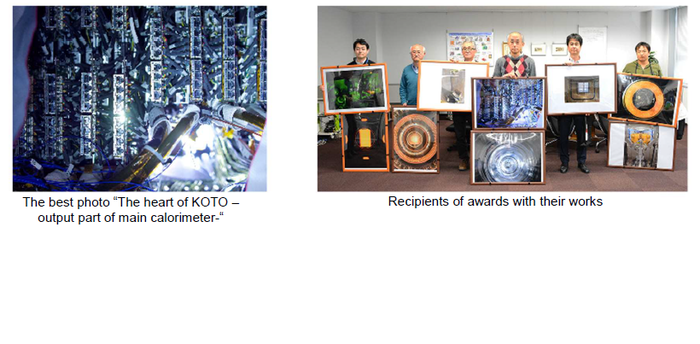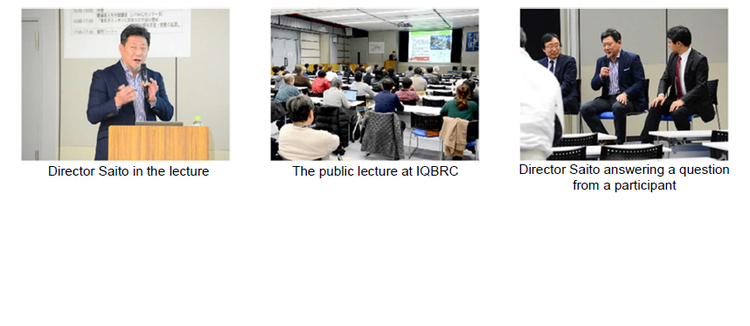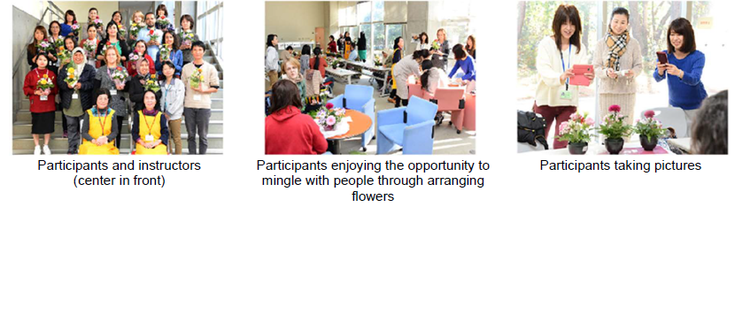J-PARC NEWS December 2018 (Issue #164)
■Prof. Ryoji Kanno of Tokyo Institute of Technology, an MLF User, awarded the Yamazaki-Teiichi Prize (November 21, The Japan Academy in Ueno, Tokyo)
On November 21, Prof. Ryoji Kanno of Tokyo Institute of Technology was awarded the 18th Yamazaki-Teiichi Prize for FY2018 by the Foundation for Promotion of Material Science and Technology of Japan (MST) for his research on the "Creation of New Lithium-Ion Conductors and Development of Solid-State Batteries". At present, fierce competition for the commercialization of solid-state batteries (batteries that use solid elements for all their components) is under way around the world. Prof. Kanno has long been engaged in the development of solid electrolytes at the Materials and Life Science Experimental Facility (MLF). The award was presented in recognition of Prof. Kanno's discovery of a substance capable of conducting lithium ions faster in a solid state than in a liquid state. A research group composed of Kanno, Toyota Motor Corporation and the High Energy Accelerator Research Organization (KEK) has highlighted the great potential of solid-state batteries with this discovery, which was enabled by crystal structure analysis of solid battery materials using neutron beams at iMATERIA (BL20) and visualization of its conducting channel.
Please refer to a reference article "Discovery of Superionic Conductor and Development of All-Solid Ceramic Battery (March 22, Press Release) - A Leading Candidate for High-Output, High-Capacity Next-Generation Electricity Storage Devices - (Press release dated March 22, 2016)" shown in J-PARC NEWS (Issue #131) http://j-parc.jp/en/news/2016/J-PARC_News-e1603.html
■Creation of quantum spin-state superposition with cobalt oxide - Towards the manifestation of excitonic insulation that forms the foundation of quantum computing elements (Press release dated December 14)
A joint team led by Prof. Keisuke Tomiyasu of Tohoku University and Dr. Seiko Kawamura of the Neutron Science Section discovered that insulation with magnetic, electric and thermal properties that are totally different from those of original LaCoO3 occurs in LaCo1-ySc-y O3 when Co in cobalt oxide LaCoO3, which does not exhibit magnetic properties at low temperatures, is chemically substituted by Sc. Also, as a consequence of X-ray diffraction and neutron spectroscopy*1, the team identified an unprecedented mechanism behind the manifestation of this insulation state, which occurs with the quantum superposition of two types of atomic states (low-spin and high-spin) with a different total electron spin. These achievements are known to implicate the so-called excitonic insulation*2, or quantum physics condensate that has rarely been observed. There are high expectations regarding their manifestation, as well as their role in the future development of new quantum computer elements. The result of this research was printed in Advanced Quantum Technologies, an international science journal published in Germany, on October 7, 2018 local time.
*1 Cold-Neutron Disk-Chopper Spectrometer, AMATERAS (BL14) was used for the neutron spectroscopy experiment.
*2 Refers to a stable state of quantum physics condensate maintained in matter that is in a state of insulation that blocks electricity.
■Third Neutron and Muon School held (November 20-24 at Tokai Village, J-PARC & IQBRC)
From November 20 to 24, J-PARC Center and the Comprehensive Research Organization for Science and Society (CROSS) held the Third Neutron and Muon School jointly with 11 organizations in Japan. The school drew some 35 students and young researchers from Japan, China, South Korea, India, Thailand, Russia and Great Britain. The participants deepened their understanding and knowledge of neutron and muon science through practical training using experimental devices based on lectures by lecturers who work actively at the forefront of this field in Japan and received instruction by MLF personnel in charge of the devices. The School also functions as an international forum for world-class human resource training by J-PARC.
■The Japanese Society for Neutron Science - Encouragement Prize awarded to Dr. Takuro Kawasaki (Neutron Science Section) (December 4-5, Ibaraki Prefectural Culture Center)
The 18th annual meeting of The Japanese Society for Neutron Science was held at Ibaraki Prefectural Culture Center on December 4 and 5. Dr. Takuro Kawasaki of the Neutron Science Section received the Encouragement Prize at the awards ceremony on the 4th. The award was presented in high recognition of "Construction, operation, and sophistication of J-PARC pulse neutron diffraction device and pioneering research" by Dr. Kawasaki who has conducted research as a member of the BL18 "SENJU" and BL19 "TAKUMI" device group.
Six presenters lectured at the opening session of the annual meeting on the theme titled "Towards the future of neutron science." Toshiji Kanaya, Head of the Materials and Life Science Division, reported on the current condition and future plans of MLF. In his report, he referred to the results of new experiments obtained from the 1MW test operation (one hour) in July that featured stable operation and high-intensity neutron beams as well as an excellent availability factor of 93%. Also, Masayasu Takeda, Director General of JAEA Materials Sciences Research Center, reported on the restart operation of JRR-3 scheduled in October 2020 and expressed gratitude to officials for their support.
■17th Workshop on Muon g-2/EDM (November 20-23, J-PARC)
A collaboration meeting planned by J-PARC on the high precision measurement experiment (E34) on muon anomalous magnetic dipole movement (g-2)/electric dipole moment (EDM) was held from November 20 to 23. This 17th meeting was attended by some 50 international co-researchers from Japan, South Korea, China, Russia and other countries. The topics discussed at the meeting include future plans geared towards the realization of experiments following Stage 2 approval of the experimental subject by KEK's Institute of Particle and Nuclear Studies.
■T2K Collaboration Meeting (December 3-7, IQBRC)
The T2K collaboration meeting, held at Ibaraki Quantum Beam Research Center (IQBRC) in Tokai Village from December 3 to 7, saw some 200 co-researchers from many countries around the world gather. The meeting was devoted to the final confirmation of data obtained up to May this year prior to reporting of the data at an international conference to be held towards the end of the year. Naohito Saito, Director of IQBRC, outlined the present conditions of J-PARC at the beginning of the plenary session held in the afternoon of the 5th.
■J-PARC Hello Science - A Neutron Perspective into Energy that Supports Reinforced Concrete (November 30, Tokai Industry and Information Plaza iVil)
The Science Café held in November invited as its lecturer JAEA's Hiroshi Suzuki* who specializes in the development of stress strain analyzing technology that uses neutron beam and material strength research. Mr. Suzuki explained that the earthquake resistance of reinforced concrete structures that are around us comes from the solid bond between reinforced steel and concrete, that neutrons are used to investigate the force that supports each material and are utilized in the development of new construction technologies that realize a secure and safe society. As the lecture enabled the participants to thoroughly understand the principle behind the application of neutrons in the strain measurement of the material interior, many questions were posed by the audience.
* Group leader of Stress Evaluation Research Group, Materials Sciences Research Center
■Outreach activities (November 23, Nishitokyo City/November 28, Tokai Village/December 2, Hitachi City)
J-PARC Center organizes outreach science and experimental classes, led by science communicator Shin-ichi Sakamoto and others, at schools and various events as part of its activities aimed at encouraging children and adults to take an interest in science. On November 23, a lecture was presented at "KEK Science Café" inside the Tamarokuto Science Center in Nishitokyo City. The lecture, aimed primarily at fourth graders of elementary school and older participants, used experiments to discuss "energy," a dispensable element of our lives. The class examined how energy changes form into electric lighting, battery, sunlight and other forms through experiments. On November 28, a class on static electricity and experimental demonstrations (using such items as an electrostatic jellyfish), which incorporated the construction of a swinging bell pendulum, was held at the science club of Nakamaru Elementary School. Organized at a science festival for young people in Hitachi City on December 2, the class was dedicated to an exposition on light and construction of kaleidoscopes on the theme of "What is the color of light?" Children were seen listening intently and enthusiastically tackling experiments and construction.
■J-PARC Photo Contest held (J-PARC, FY2018)
The ceremony to award the winners of FY2018 J-PARC Photo Contest was held on November 29 involving a total of 11 applicants and 36 works. One grand prize, two outstanding prizes and seven runners-up were selected. The grand prize went to "The Heart of KOTO," a work sent in by Mr. Masahiko Uota of the Accelerator SectionⅤ. The work shed light on the use of ethernet connectors at the signal output from a main calorimeter, which functions as its heart, for the KOTO experimental device in operation at the Hadron (HD) hall.
■Public lecture "Are neutron beams useful? Living, industry, medicine and space" by The Japan Society for Neutron Science (December 8 at IQBRC/Tokai Village)
On December 8, a public lecture organized by The Japan Society for Neutron Science was held at Ibaraki Quantum Beam Research Center (IQBRC). Three lecturers lectured at the class titled "Are neutron beams useful? Living, industry, medicine and space." Following lectures on the themes of "Utilization of neutron beams that open up the future - Applications in living, industry and medicine" and "What you should know about particle therapy for cancer treatment," Naohito Saito, Director of IQBRC, gave a talk on the theme of "History of space engraved in the subatomic particle muon - Investigation into the origin of space and matter by J-PARC." Saito is a researcher who pursues research on quantum beams with students while administering Naohito Saito Research Lab at the School of Science at the University of Tokyo and dedicating his service to the management of the overall J-PARC center. His Research Lab is working on the exploration and research of new physics that transcend the standard model through precise measurement of muon anomalous magnetic dipole movement (g-2)/electric dipole moment (EDM) primarily of μ (mu) particles along with the Muon Precision Measurement Lab at SOKENDAI, The Graduate University for Advanced Studies. The lecture covered a wide range of topics including the overview of research being conducted at J-PARC, the role assumed by this research in discovering the inception of space and the reason for the importance of the precise measurement of muons in the exploration and research of new physics.
■Ikebana class (November 15 at Advanced Science Research Center of Nuclear Science Research Institute)
On November 15, the third Ikebana class in this fiscal year was held at the Advanced Science Research Center of the Nuclear Science Research Institute under the guidance of an instructor at Tokai-mura International Association. The class was attended by more than 20 people with the participation of students from other countries enrolled at training courses of the Nuclear Human Resource Development Center. Participants were seen arranging attractive flowers to their own taste and enthusiastically taking photos to mark the occasion.


